Our author and her family are wowed by an ethical travel break, meeting local schoolchildren and visiting eco resorts set in verdant countryside and by pristine beaches
There is a moment of absolute stillness – the battered football whizzing through the air, all eyes following it, before it crashes down into the glass case and tiny gasps escape little mouths. Thankfully, it rolls off, leaving the glass and the encased Buddha statue unharmed.
We are playing football on a dusty, sunbaked escarpment with a group of farm children, and amid the excitement I almost destroy the village’s religious relic. But the game goes on, with limbs flying everywhere, toes (mine) getting stamped on and the football continuing to fly skywards.
We are here to meet some of the 30 or so children who are part of Classroom in the Wild, a community outreach project initiated in 2014 by Chamintha and Rajindra Jayasinghe, founders of Ayu in the Wild Holidays, to create opportunities for children in Sri Lanka’s most disconnected communities. The children have been learning how to cohabit the rural surroundings with elephants
For these children, a lack of access to learning English has stifled their progress, and for many of them joining their parents to work the land will be their only viable option. We meet them at their school – a hut accessed by a single road through rice paddy fields, around four miles from the world heritage site of Sigiriya. It is a wild, inaccessible area that takes up to four buses and a tuk-tuk ride to reach, which has resulted in some teachers refusing to come.
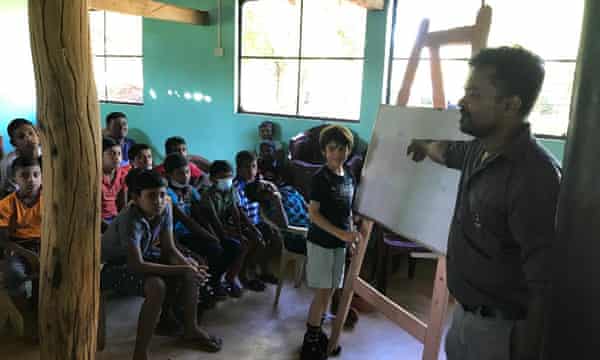
The journey is long, even though we are staying fairly close, but the rewards are great and it leads to one of the most enriching experiences we have on our family holiday. There is a lot of giggling and shyness at first, even from our own children (Seb, eight, and Jemima, four), but there is an opportunity to play some word games, and then the ice is well and truly broken when we start to play football.
There are bursts of conversation in between matches and we learn that the children are mainly from families who farm vegetables and work in the paddy fields; that they have been learning how to cohabit in these rural surroundings with elephants (the children live in a community where human-elephant conflict is rife); and that their lessons continued during the pandemic – each Saturday morning they logged into just one smartphone for an online lesson.
As we leave, Sithumi, 14, stands up in front of the class and in pristine English tells us how much they have enjoyed the day, and asks us to come back again.
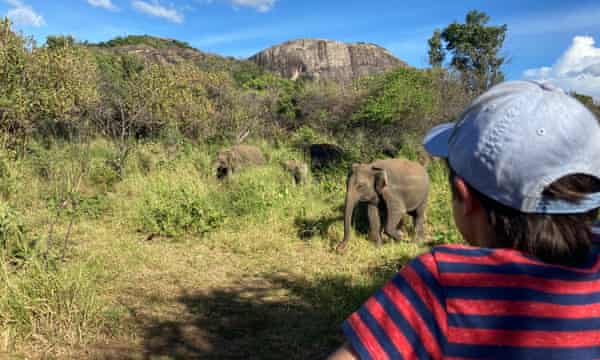
Chamintha first came across the children when she was travelling with her husband and saw them playing cricket with a deflated football. She says the visit to the school remains one of their most sought-after experiences, and it is easy to understand the reasons – it gives us an opportunity to really connect with a local community and gain an insight into their lives in a way that would be almost impossible in the confines of a hotel or visiting tourist attractions. In addition to supporting the weekly spoken English classes by fully funding the teacher and lesson planning, Ayu in the Wild employs a naturalist who regularly hosts discussions between travellers to develop the children’s vocabulary and confidence in speaking with foreigners. Tourism is as vital to the island’s economy as cricket is to the island’s spirit
“We believe tourism must be a catalyst in inclusive development. Classroom in the Wild connects disconnected rural communities,” says Chamintha.
“Prior to Covid-19, Sri Lanka was heading towards over-tourism. This project showcases the value of small-scale immersive tourism and the emotional and intellectual impact on guests. We believe kids can be the greatest advocates of change,” she adds.
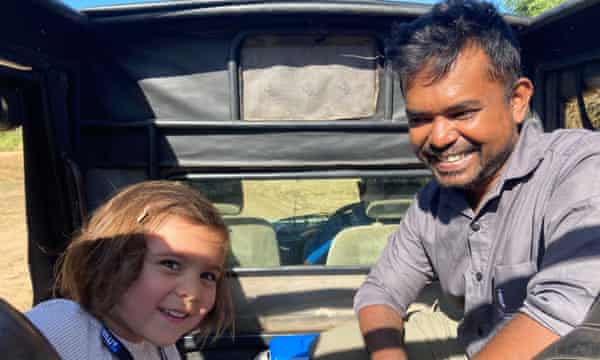
The ethos of Ayu in the Wild Holidays is community-based tourism, and from the moment we land at Colombo airport and meet our guide, Dhanu, we know that this will be a trip where we will see a different Sri Lanka, and why at this moment that is more important than ever. We arrive when it is relatively peaceful and calm, but the country is in turmoil, having defaulted on its debts for the first time in its history, as it struggles with a devastating economic and political crisis. This is against the backdrop of the 2004 Boxing Day tsunami, the 2019 easter bombings and the pandemic, all of which ravaged the country’s tourism industry.
We still decide to travel, and arrive in the early hours of the morning in late May 2022. Heavy rain batters the roof of the van as we veer off the main road and down what appears to be a dirt track. On the other side is the veranda of the Wallawwa, a restored 200-year-old manor house between Negombo and Colombo. We are handed freshly squeezed lychee juice and immediately forget any trepidation we’d felt just hours earlier as we receive the warmest of welcomes, with everyone telling us how grateful they are that tourists are still coming to the country.
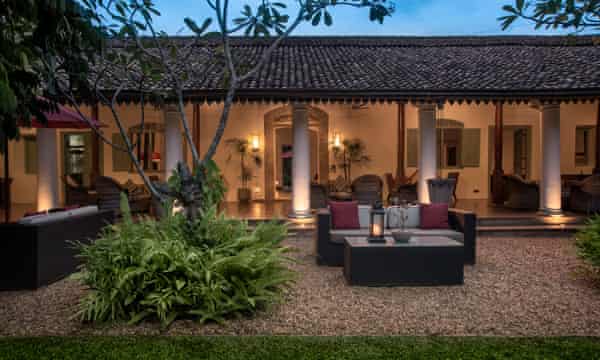
“Tourism is as vital to the island’s economy as cricket is to the island’s spirit,” says Chamintha.
“In December last year, tourism bounced back phenomenally with the end of the pandemic, and that’s the kind of welcome that will greet a visitor, with hard-working guides, drivers, hosts and local vendors still smiling – still welcoming, despite reeling from the spiralling cost of living and a loss of income. We’re a pretty resilient bunch,” she adds.
At the Wallawwa we see this resilience first-hand, with the staff making our stay comfortable despite the national unrest. There is a beautifully kept jungle pool hidden among mango and weeping fig trees, and the hotel grows much of its produce in its vegetable garden, with water for the guests’ showers pumped from the garden’s wells, and solar power in use.
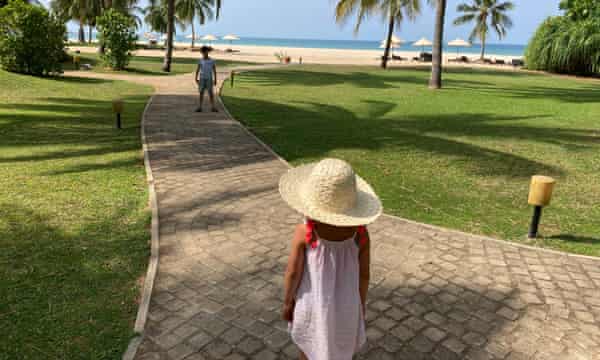
On our first evening, amid a din of insects and birds, the children play boules on the green, and we tuck into black pork and sweet, sticky prawns; colourful curries of jackfruit and aubergine; fragrant dhal and cheesecake with a rosewater and tamarind sorbet. The food is wonderful. After dinner, Neil, the manager, teaches us how to play carrom, a tabletop game in which players flick disks to the corners of the board. “Focus,” he says, just before my husband whacks the small wooden disk, sending it ping-ponging across the cedar-wood board, missing its target.
We travel around Sri Lanka in the company of our guide Dhanu and driver Eddie – who combine enthusiasm, knowledge and such warmth towards our children that they feel like family by the end of the trip.
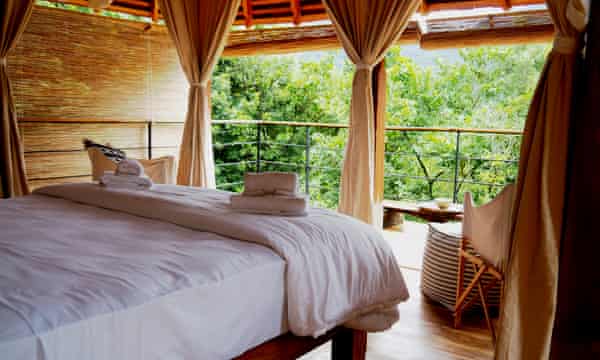
What was the biggest adrenaline hit of the holiday was a constant source of debate: was it the wind-buffeted dawn ascent up Sigiriya rock; giant fruit bats hanging from the trees in Kandy; the sustainable wild elephant safari; snorkelling along a coral reef in bath-water warm seas; or a mountain path view of a crested serpent eagle taking off and cruising the thermals across the tea-field valleys below?
Between the jaw-dropping encounters with nature we take a breath with a four-day stop at the Uga Bay hotel in Pasikuda (studios from £130 a night) – on the island’s east coast – and have a holiday within a holiday. The hotel is bigger than other places we have stayed at, with its rooms arranged in an arc facing the pristine, white beach, but there is an underlying commitment to the local environment and their communities. Water-filling stations are placed around the property to reduce plastic waste; solar panels are used; the hotel is moving towards only working with ethical whale-watching companies that responsibly approach whales and dolphins; and it has announced a commitment towards bringing more women into its workforce.
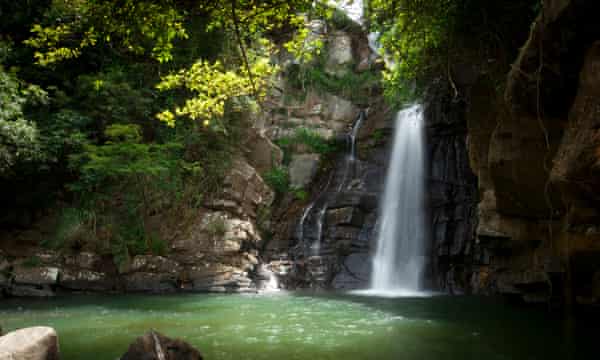
There is a similar ethos at the final stop on our trip at Living Heritage Koslanda (forest pavilion cottages from £195 a night), a hotel in a wooded valley with its own waterfall and kitchen gardens, which employs mainly local people, most of whom are female. The hotel was initially the vision of Sri Lankan film director Manik Sandrasagara, who dreamed of creating an eco-resort in “one of the most sacred and secret places on Planet Earth” while protecting its natural biodiversity. The hotel was completed by his wife Lucy in 2012, four years after his death.
“It has been an incredibly difficult few years, but despite everything we continued with Manik’s dream, and what we have is something completely unique, says Lucy. “It is a place like no other.”
In the space of two weeks, we feel we’ve packed in about four different, breathtaking holidays in their own individual climates. We leave already plotting which bits we would want to see more of on our return, and it has alerted us to the importance of travelling with tour companies who have community at the forefront, reinforcing a sense of cultural identity and providing opportunities for sustainable development.
Source: The Guardian
